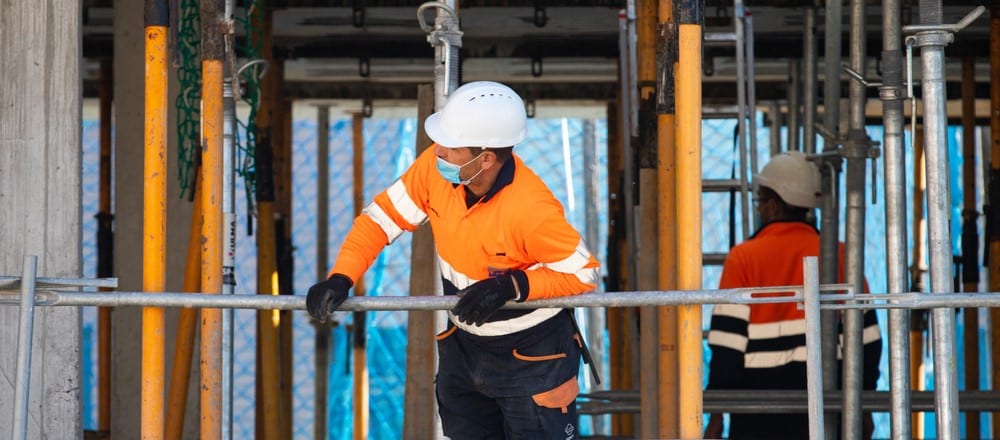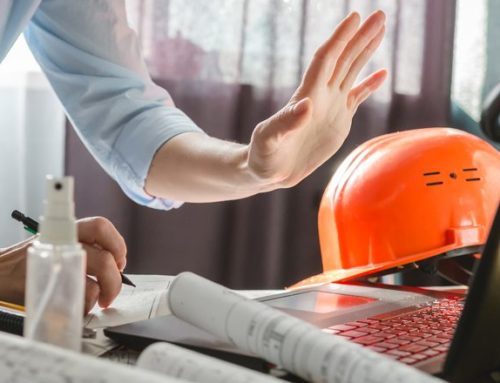Navigating Potential COVID-19 Roadblocks
All The American Jobs Plan and infrastructure talk coming out of Washington is very encouraging for the construction industry. Additionally, the Associated Builders and Contractors’ Confidence Index, remains above the threshold of 50, indicating expectations of growth over the next six months. Yet there are some challenges on the road to construction recovery. It’s important to be aware of them in order to try and navigate potential roadblocks. They include:
- Continuing pandemic
- Increased prices
- Labor shortages
Continuing pandemic
United States public health officials say they are bracing for a fourth wave of the COVID-19 pandemic as reports of the daily averages at the end of March hovered around 65,000. Over the last year, workplace health and safety guidelines have been necessary to help curb the spread of coronavirus at jobsites. Everyone in California age 16 and older is now eligible to book COVID-19 vaccine appointments, but not everyone in the industry is scheduling their shots. In fact, 46% of the participants in a Construction Dive survey say they have no plans to get a vaccination. Construction workers are not the only ones who are uncertain. A national poll found 20% of U.S. Workers were unsure about getting the vaccine.
The CDC says the “COVID-19 vaccination is an important tool to help us get back to normal” and Rebecca Ray, Ph.D.,executive vice president of human capital at The Conference Board said in a statement that there is a need for companies to “limit as much uncertainty as possible by communicating what they know and what their expectations are about returning to the workplace as well as guidelines about the vaccine to employees.”
Increased prices
The cost of two primary building materials, steel and lumber, have jumped 20 to 25% over the last year. Even though the raw material cost does not directly translate to a 20 to 25% cost increase on projects, the impact is significant. Additionally, prices continue to rise on other materials such as gypsum, copper, vinyl siding, and cement. While there are a number of reasons why this is happening, a report by the Associated General Contractors of America Chief Economist Ken Simonson states, “the short answer is the pandemic, and the supply chain is still being affected in a number of ways.” He notes, “These problems threaten to drive up the cost and completion time for many vital projects and potentially set back the recovery in construction employment.”
Labor shortages
Before any of us heard of COVID-19, the industry faced the challenge of a skilled labor shortage. A 2019 survey by the Associated General Contractors of America showed about 80% of construction companies couldn’t find the workers they need. New data from the U.S. Bureau of Labor Statistics released by Associated Builders and Contractors show construction companies will need to hire at least 430,000 more workers this year than they employed in 2020, and the number of additional construction workers needed in 2021 could grow to nearly 1 million.
“When the pandemic began, some thought (and hoped) that the massive job losses observed in March and April would mitigate the skilled labor shortages that have frustrated construction firms for years,” wrote Anirban Basu, Marcum’s chief construction economist in his report. “That simply hasn’t happened to any meaningful degree.”
To address skilled workforce shortages in the building and construction industry, organizations such as The Rebuild SoCal Partnership advocate for expanded access to in-demand career training programs and apprenticeship opportunities. Learn more about these opportunities.
To stay abreast of these and other important infrastructure issues that impact Southern Californians, sign up for the Rebuild SoCal Partnership newsletter and get information sent directly to your email box.






Leave A Comment